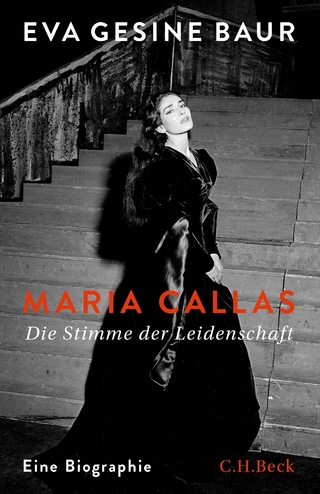
Being Wagner
The Triumph of the Will
Seiten
2017
William Collins (Verlag)
978-0-00-810569-3 (ISBN)
William Collins (Verlag)
978-0-00-810569-3 (ISBN)
- Titel z.Zt. nicht lieferbar
- Versandkostenfrei innerhalb Deutschlands
- Auch auf Rechnung
- Verfügbarkeit in der Filiale vor Ort prüfen
- Artikel merken
The perfect introduction to the Master.
One hundred and thirty-five years after his death, Richard Wagner’s music dramas stand at the centre of the culture of classical music. They have never been more popular, nor so violently controversial and divisive. As a man, he was a walking contradiction: aggressive, flirtatious, disciplined, capricious, heroic, visionary and poisonously anti-Semitic. His ten great mature masterpieces constitute an unmatched body of work, created against a backdrop of poverty, revolution, violent controversy, critical contempt and hysterical hero-worship.
His work often dealt with myth, but his own life had the character of a fable. At one point, in his early fifties, desperately poor after a life of heroic productivity, he had four lengthy operas written with no hope of seeing them done, when, as if in a fairy-tale, he was rescued by a beautiful young king with limitless wealth. When one of those works, Tristan and Isolde, was at last performed, it revolutionised classical music at a stroke.
Wagner went on to create The Ring of the Nibelung: a vast epic in four massive segments, ushering gods and dwarves, heroes and thugs, dragons and rainbows onto the stage. This was the apotheosis of German art as he saw it, so extreme in its demands that he had to train a generation of singers and players to perform it, and erect a custom-built theatre to house it. Wagner died, exhausted, after creating one final piece – Parsifal – that seems to point to an even more radical new future for music.
Simon Callow plunges the reader headlong into Wagner’s world, examining the intellectual and artistic climate in which Wagner, a composer like no other who ever lived, extreme in everything, creator of perhaps the most sublime and most troubling body of work in the history of music.
One hundred and thirty-five years after his death, Richard Wagner’s music dramas stand at the centre of the culture of classical music. They have never been more popular, nor so violently controversial and divisive. As a man, he was a walking contradiction: aggressive, flirtatious, disciplined, capricious, heroic, visionary and poisonously anti-Semitic. His ten great mature masterpieces constitute an unmatched body of work, created against a backdrop of poverty, revolution, violent controversy, critical contempt and hysterical hero-worship.
His work often dealt with myth, but his own life had the character of a fable. At one point, in his early fifties, desperately poor after a life of heroic productivity, he had four lengthy operas written with no hope of seeing them done, when, as if in a fairy-tale, he was rescued by a beautiful young king with limitless wealth. When one of those works, Tristan and Isolde, was at last performed, it revolutionised classical music at a stroke.
Wagner went on to create The Ring of the Nibelung: a vast epic in four massive segments, ushering gods and dwarves, heroes and thugs, dragons and rainbows onto the stage. This was the apotheosis of German art as he saw it, so extreme in its demands that he had to train a generation of singers and players to perform it, and erect a custom-built theatre to house it. Wagner died, exhausted, after creating one final piece – Parsifal – that seems to point to an even more radical new future for music.
Simon Callow plunges the reader headlong into Wagner’s world, examining the intellectual and artistic climate in which Wagner, a composer like no other who ever lived, extreme in everything, creator of perhaps the most sublime and most troubling body of work in the history of music.
Simon Callow is an actor, director and writer. He has appeared on the stage in many films, including the hugely popular Four Weddings and a Funeral. Callow’s books include Being an Actor, Shooting the Actor, a highly acclaimed biography of Charles Laughton, a multi-volume biography of Orson Welles and Love is Where it Falls, an account of his friendship with the great play agent, Peggy Ramsay. Renowned for a series of one-man shows including The Importance of Being Oscar, The Mystery of Charles Dickens and Being Shakespeare, he wrote and starred in Inside Wagner’s Head which provided the inspiration for this book.
| Erscheint lt. Verlag | 26.1.2017 |
|---|---|
| Verlagsort | London |
| Sprache | englisch |
| Maße | 141 x 222 mm |
| Gewicht | 390 g |
| Themenwelt | Literatur ► Biografien / Erfahrungsberichte |
| Kunst / Musik / Theater ► Musik ► Klassik / Oper / Musical | |
| Kunst / Musik / Theater ► Musik ► Musiktheorie / Musiklehre | |
| ISBN-10 | 0-00-810569-3 / 0008105693 |
| ISBN-13 | 978-0-00-810569-3 / 9780008105693 |
| Zustand | Neuware |
| Informationen gemäß Produktsicherheitsverordnung (GPSR) | |
| Haben Sie eine Frage zum Produkt? |
Mehr entdecken
aus dem Bereich
aus dem Bereich
Mozart und der Abschied von der Aufklärung
Buch | Hardcover (2024)
C.H.Beck (Verlag)
28,00 €


